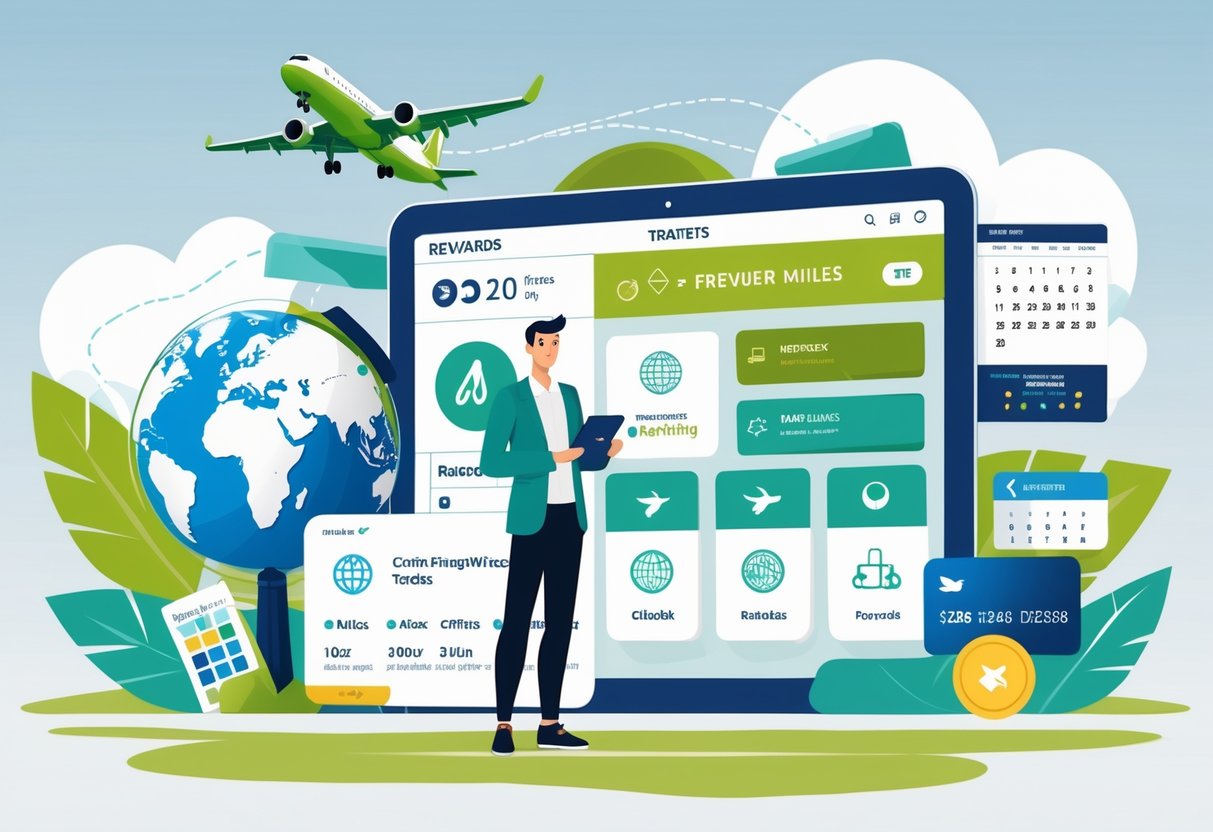
Optimizing Non-Flight Redemptions

Frequent flyer miles and credit card points can be redeemed for more than just free flights. Strategic travelers can also benefit from redeeming rewards for hotel stays, car rentals, merchandise, and unique travel experiences.
Hotel Stays and Car Rentals
Using airline miles or transferable credit card points for hotel stays is a practical option, especially when cash rates are high. Many programs partner with major hotel chains, allowing direct transfers or point bookings with brands like Marriott, Hilton, or Hyatt.
Redemptions for hotel rooms often deliver solid value—especially during peak travel seasons, holidays, or in popular tourist destinations. For car rentals, some frequent flyer programs let members redeem points directly through their portal or transfer them to rental partners such as Avis, Hertz, or National.
While car rental redemptions usually provide less value than flights or hotels, they can still be worthwhile in regions with expensive auto rentals. To maximize value, travelers should compare the cash price of the hotel or car against the number of points required, always factoring in any taxes or additional fees.
Redeeming Points for Merchandise and Experiences
Points can also be redeemed for merchandise, electronics, gift cards, and exclusive travel experiences like concerts, sporting events, or culinary tours. Most airlines and credit card rewards platforms maintain online catalogs for merchandise options, but these redemptions typically offer a lower cents-per-point value compared to travel bookings.
For travel experiences such as VIP airport services, adventure tours, or special event tickets, redemptions can be worthwhile for travelers seeking unique moments that are difficult to purchase outright. These options are appealing when there are no desirable flight or hotel redemptions available.
For tangible goods, reading reviews and comparing retail prices helps ensure the redemption provides reasonable value. Detailed guidance for maximizing miles and points beyond flights is provided in the Ultimate Guide to Maximizing Airline Miles.
Managing and Combining Multiple Rewards Accounts

Managing multiple frequent flyer accounts and loyalty memberships can help travelers unlock greater value from their points. By consolidating data and leveraging program features, it’s possible to avoid expired miles and take advantage of bonus opportunities.
Tracking Miles and Expiry Dates
Keeping track of frequent flyer miles, points balances, and expiry dates across several programs is essential. Many flyer programs have differing policies regarding when miles expire, with some resetting expiration after activity, while others have a fixed expiration schedule.
A table or spreadsheet can make this process easier:
| Program Name | Member Number | Points Balance | Expiry Date | Last Activity |
|---|---|---|---|---|
| United MileagePlus | XXXXXX | 25,000 | 12/2025 | 01/2025 |
| Delta SkyMiles | XXXXXX | 18,000 | None | 03/2025 |
| American AAdvantage | XXXXXX | 21,500 | 08/2025 | 07/2024 |
Automated point-tracking services or award program dashboards can help centralize information. Setting calendar reminders for expiring points reduces the risk of losing rewards.
Using points for small redemptions or qualifying activities, such as shopping or surveys, can keep balances active and stop expiration.
Pooling and Transferring Points
Certain rewards programs allow members to combine points with family or household accounts, known as pooling. This is especially valuable when no single member has enough miles for a redemption.
For example, Air Canada Aeroplan, JetBlue TrueBlue, and British Airways Executive Club allow family pooling for free or a nominal fee. Transferring points between different loyalty programs is another strategy.
Many credit card programs like Chase Ultimate Rewards and American Express Membership Rewards support direct transfers to airline or hotel partners. Check each program’s rules for transfer ratios and potential fees.
Pooling and combining points can also accelerate earning toward free or discounted flights, letting travelers leverage every available mile. A comprehensive guide to rewards programs that allow free point combining can help identify where this strategy is possible.
Always confirm transfer limits and timelines to avoid losing value during the process.
Advanced Strategies to Maximize Value

Maximizing frequent flyer miles and points requires careful analytics, a strong understanding of airline loyalty programs, and attention to shifting trends in the travel landscape. Applying advanced strategies allows travelers to stretch their rewards further for premium cabins, long-haul flights, and optimal travel dates.
Analyzing Award Charts and Sweet Spots
Analyzing airline award charts and identifying sweet spots is a critical skill in the points and miles community. Award charts outline the number of miles or points needed for different routes, cabins, and airlines.
Some programs have region-based charts, while others use distance-based or dynamic pricing models. Travelers should compare multiple loyalty programs to find which offers the lowest mileage requirement for specific routes.
As an example, flights between the US and Japan in business class may require significantly fewer miles with certain international carriers than with US-based airlines. Booking partner flights through an airline’s alliance can unlock better redemption values, sometimes with fewer surcharges and taxes.
Sweet spots—routes or redemptions that offer unusually high value—are typically found on off-peak days, with less popular airlines, or on new routes debuting in airline networks. Utilizing online tools, spreadsheets, and loyalty program calculators can make these analytics more efficient.
For an in-depth look at the basics and differences in points programs, readers can explore A Beginner’s Guide to Traveling on Points and Miles.
Timing Redemptions and Taking Advantage of Sales
Timing is essential when redeeming miles and points for free or discounted flights. Award seat availability fluctuates based on seasonality, fare sales, and seat demand.
Airlines periodically release more award seats as departure dates approach or during specific promotional periods. Savvy travelers set alerts for fare drops, monitor frequent flyer programs for flash award sales, and book tickets during off-peak seasons for maximum value.
Booking flexibility, such as choosing midweek departures or alternative airports, often leads to significant savings and better redemption options. Regularly reviewing loyalty program websites and newsletters helps travelers stay informed about limited-time transfer bonuses or reduced mileage deals, as described in Frequent Flyer Hacks.
Quick action is often necessary, as the best deals vanish quickly when a sale or new availability is released. These timing strategies, combined with strong program analytics, increase the odds of securing high-value flights using points and miles while navigating a dynamic travel landscape.



